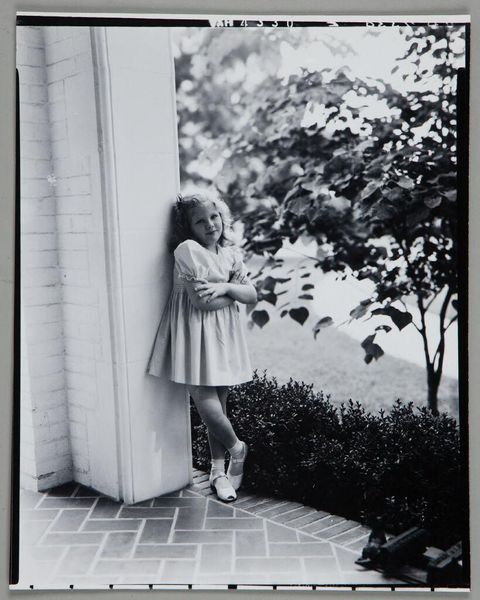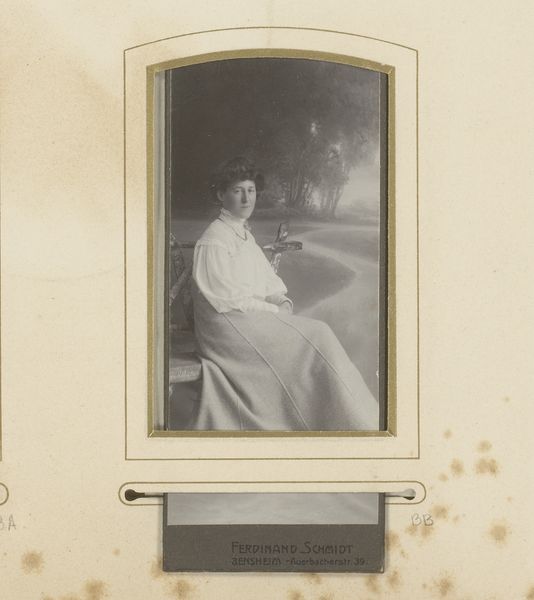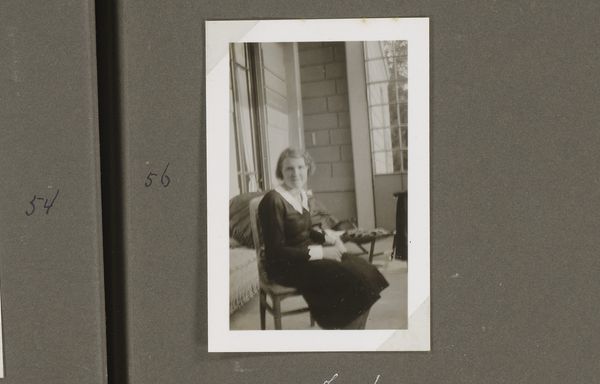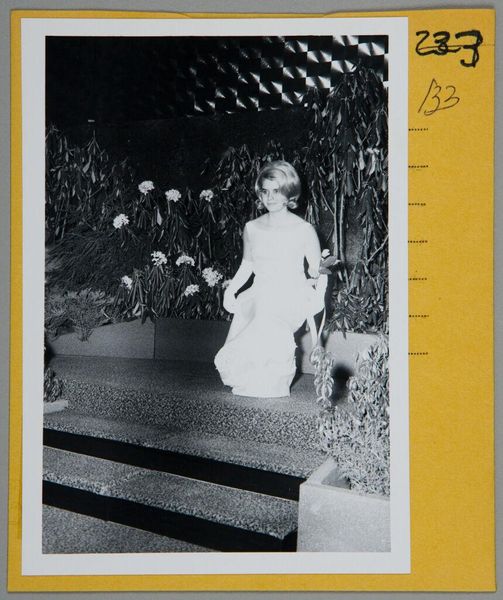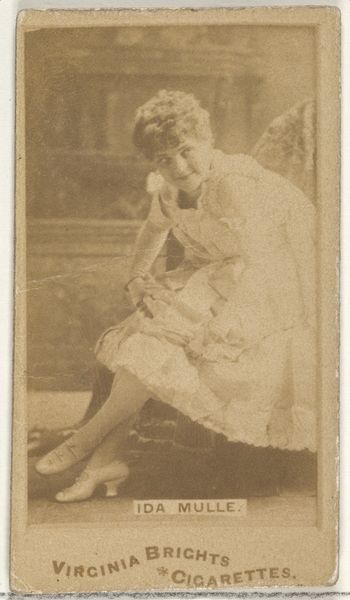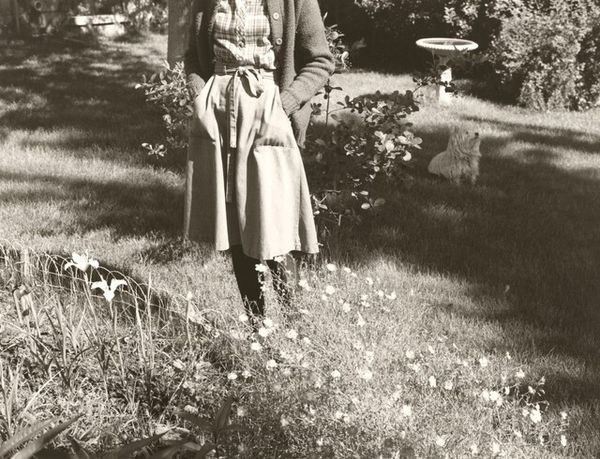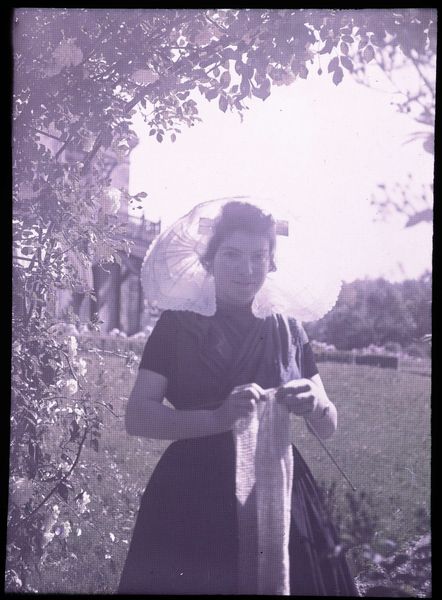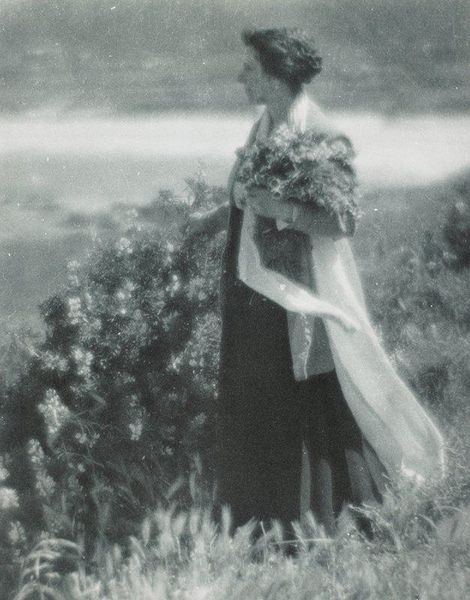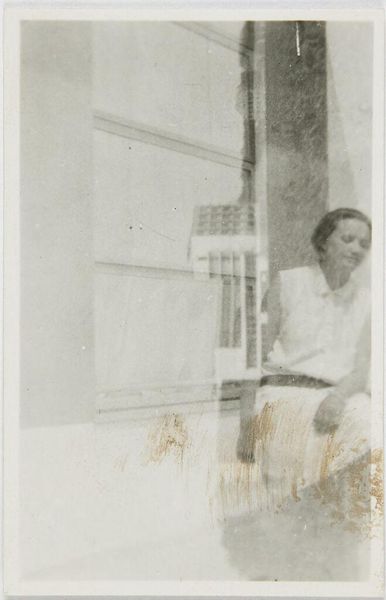
Portret van een jonge vrouw bij een deuropening, mogelijk Elise Burdet 1907 - 1930
0:00
0:00
Dimensions: height 119 mm, width 89 mm
Copyright: Rijks Museum: Open Domain
Curator: This is Adolphe Burdet’s "Portret van een jonge vrouw bij een deuropening, mogelijk Elise Burdet," likely created sometime between 1907 and 1930. What strikes you about this photographic portrait? Editor: Well, the lighting is instantly captivating. It feels like a memory half-faded, half-vivid. The colors almost breathe. There's a wistful feeling, don’t you think? A delicate stillness, but with a touch of melancholic grace. Curator: Indeed. It is currently part of the Rijksmuseum's holdings and, if we think about photographic production, this gelatin silver print was colorized. Note the layering to evoke atmosphere—the subject stands poised in a doorway; consider how her clothing is placed against the landscape. Burdet's technique highlights both material availability and painterly ideals during his time. Editor: You're right. The textured treatment pulls the eye into these material details and the staging is brilliant—this liminal space! Between interior and exterior, shadow and light. The very idea of the open door implies an invitation... a turning point. I wonder about Elise and what awaited her just outside the frame. Curator: That sense of ambiguity is deliberate. And note too the way Burdet combines elements—landscape, architecture, human subject— challenging genre distinctions common to early 20th-century art production. It speaks to how the expansion of photographic practices began affecting social spaces, blurring traditional categories in the art world. Editor: Exactly! Art wasn't just paintings in galleries anymore, it was also this dance between photography, impressionistic touches, and the everyday lives of women, capturing nature's essence at the doorway... the place where interior comfort meets exterior risk, and beauty merges with whatever waits on the other side. Curator: So while formally, the work is a portrait, its strength lies in this commentary about industrial innovation reshaping artistic categories. That speaks to the impact the camera had in registering shifting social relations. Editor: It becomes this tender record of fleeting moments! I get a glimpse into a particular history and that woman's individual journey. Each time I look at this, a different chapter of her story emerges. It reminds me that a portrait's essence isn't just the face it shows; it’s everything swirling just outside its borders.
Comments
No comments
Be the first to comment and join the conversation on the ultimate creative platform.

